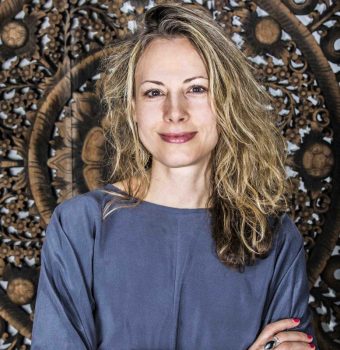
What causes addiction?
There are many theories — the main ones being that addiction is driven by an inborn and/or acquired biochemical imbalance in dopamine, endorphins and other neuro-chemicals, and/or that it is driven by psycho-spiritual factors such as early trauma and/or a lack of healthy connections.
I have been fascinated by addiction — what causes it, its biochemistry, and how to heal it — for a long time. My grandmother was an alcoholic and died tragically of suicide when my mother was 15, impacting the mental health of several generations in our family, including my own and that of my children.
Several of my closest friends are ex-addicts. I am drawn to ex-addicts, as I often find them particularly sensitive, thoughtful, empathetic and self-aware, and they are usually the ones who have done the hard graft of self-work and self examination, which tends to make them particularly evolved, conscious and awake human beings.
Addiction is a life threatening disease, but I believe we are all on a spectrum. Some of us are more addicted than others, but pretty much all of us can dabble or indulge in potentially addictive substances and behaviours, whether it’s loving too much, being too avoidant, too codependent, shopping or drinking too much, smoking, taking recreational drugs or painkillers, excessively using technology, or not being able to stop checking our social media.
We often wonder where to draw the line — when does the use of a substance or behaviour tip into addiction? Usually, when it meets two criteria:
- It is unhealthy for the “addict” and those around them (this does beg the question as to how far on the spectrum of “unhealthy” one has to go before deciding something is an addiction versus a coping mechanism)
- The “addict” is unable to stop it, even when they are aware of it and its damaging effects
The link between addiction and the nervous system
This month, I released two interviews for The MindHealth360 Show — one with Professor Robert Lustig and Dr. Don Grant on the biochemistry of addiction, especially technology addiction, the other with Professor Stephen Porges on the nervous system and his groundbreaking polyvagal theory.
These have led me to ponder the relationship between addictive substances and behaviours and the nervous system.
Professor Stephen Porges’s groundbreaking work on the polyvagal theory sheds new light on the nervous system — not only do we have the fight and flight mechanism of the stress response, but we also have a freeze, or shut down response, and a social engagement system, all of which are part of our autonomic nervous system.
- Rest, digest, and social engagement are all states that correlate with a calm nervous system, and lead to healing and repair of our bodily and mental functions.
- Fight, flight and freeze are all coping mechanisms that we have developed to deal with stressors, and over the long term, will hamper the body and mind’s ability to heal and repair.
A dysregulated nervous system is when we can no longer cycle appropriately between these two states, and get stuck in fight, flight, or freeze states, even when the threat has passed, usually a case of reliving past stressors as if they are happening in the present.
Meanwhile, chronic current stress of any kind can lead to a physiological and psychological state of threat, which can jangle our nervous system (albeit appropriately, as in response to current stressors rather than past ones) and cause discomfort.
Psychotherapist Benjamin Fry, inspired by the work of Professor Porges, believes that a response to this uncomfortable state of stress and dysregulation (with its ensuing biochemical cascade of neuroendocrine imbalance) can be to seek relief and nervous system regulation through external behaviours and substances, which temporarily make us feel better, but can lead to addiction.
Meanwhile, indulging in addictive substances and behaviours can cause chronic biochemical imbalances in our hormones and neurotransmitters, and can lead to gut issues and inflammation, all of which can further dysregulate our nervous system, so it can become a vicious circle.
My 15 year old son, for instance, who seems addicted to video games and his phone, is using these to cope with the fact that he is anxious/bored at school, and his virtual world is a more comfortable world in which he can control his environment and, ironically, find some peace and some connection.
His overindulgence in video games and social media may also be a response not just to the current threat of a high work load and academic and social pressure, a poor diet high in sugar and processed foods, but also to past threat — from early childhood traumatic experiences to do with my own postpartum depression and/or his grandmother’s life-threatening heart attacks, and/or his parents’ separation for instance.
If his nervous system were more regulated, would he have as much of a need to escape into video games? Probably not. But how much of it can be seen as a “coping mechanism using external regulation rather than an actual “addiction”?
Healing addiction by healing the nervous system
In order to heal addiction, we need to first and foremost heal the nervous system, and look at what might be stressing it. As we have seen in Nervous System Dysregulation and in The 6 key causes of mental health issues?, in order to heal our nervous system we need to look at:
- Current threats, which may be causing us stress. These can be:
- Biochemical (mould, pollution, food allergens, and infections, which can lead to hormonal/neurotransmitter imbalances, gut issues and inflammation)
- Psycho-spirtual (lack of purpose and meaning, difficult life circumstances and relationships, traumatic events, etc)
- Lifestyle behavioural (lack of healthy sleep, exercise, life habits)
- Past threats (these can be biochemical and psycho-spiritual) which are stuck in our system, and to which we are still responding as if they were current threats, leading to nervous system dysregulation.
The cultural and commercial component of addiction
While the nervous system theory explains addiction as an escape, via substances and behaviours, from uncomfortable feelings of threat, Professor Robert Lustig postulates that we are driven to addiction by the commercial forces in our societies (advertising, cultural conditioning) which seek to sell us products and services in exchange for pleasure. And that these commercial forces have successfully conflated pleasure with happiness in our minds.
Whatever the driver towards addictive substances and behaviours however, Professor Lustig notes that since biochemically, pleasure is inversely correlated with happiness, just as dopamine (the pleasure neurotransmitter) is inversely correlated with serotonin (the happiness neurotransmitter), when we pursue pleasure and engage in potentially addictive activities and substances such as sex, alcohol, drugs, shopping, technology consumption, etc. we are damaging our ability to find true contentment.
Especially as the more dopamine we seek and make, the more we can burn through our receptors, and the more behaviours and substances we need to consume or engage in to make the same amount of dopamine.
So our lives can become about constantly seeking that next dopamine hit through substances and behaviours rather than being satisfied with a calmer feeling of contentment and even happiness that comes from an internal sense of peace and regulation.
How a healthy nervous system helps us to avoid addiction
We can combine both theories and say that people with healthy, regulated nervous systems who have balanced lives with an optimal amount of stress (not too little, not too much) are doubtless less susceptible to the cultural calls for more consumption and pleasure, rather than contentment, and therefore less liable to become addicted to substances or behaviours.
A healthier, more balanced nervous system, exhibiting less physiological and psychological stress, is less likely to become addicted, and more likely to find lasting contentment and freedom.
Therefore, healing and balancing our nervous systems, and dealing more appropriately with our stress, is key to healing and avoiding addiction.
